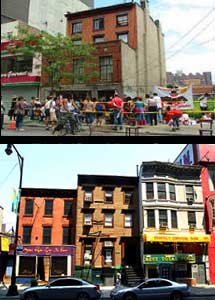The study, possibly the most extensive documentation of the anti-slavery movement here, noted several hotbeds of abolitionist activity in Downtown Brooklyn and Brooklyn Heights, where prominent abolitionists such as Henry Ward Beecher and William Lloyd Garrison lived. Before the Civil War, the borough, then filled with farmland, also had the highest slave population in New York, and later one of the most successful self-sustaining black communities in the country, Weeksville.The article also examined the hopes and challenges that Bloomberg's recently announced panel present:
Councilwoman Letitia James, who continues to fight against the destruction of the Duffield Street homes, said she applauds the mayor’s announcement, but “it’s a one-hand clap. They need to go further and preserve these homes.
“I think [the mayor and the Development Corporation] would like to view this as a peace treaty, but it’s not. It doesn’t go far enough,” she said.
Jim Driscoll, a member of the expert panel that reviewed the Duffield Street study who recently submitted an affidavit opposing the seizure of the Duffield Street homes, said at least one should be saved as part of the commemoration effort.
“You have to have a museum if you’re talking about tourism and people coming to see this thing. They’re simply not going to come to see a bunch of signs and a walking tour,” he said. “Basically one of the homes, like 227 Duffield St., would be perfect and that wouldn’t be prohibitively expensive like some of these museums.”
